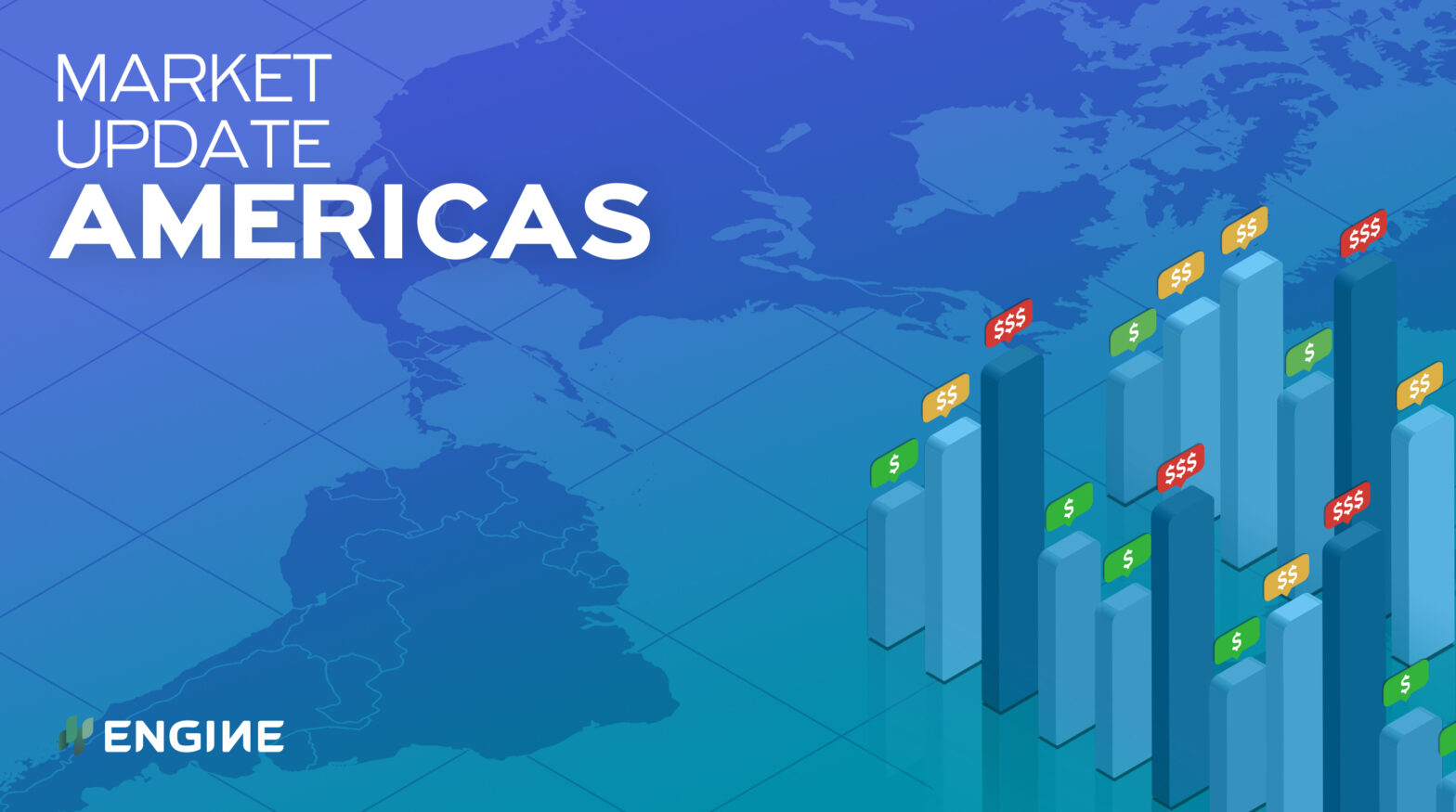Bunker fuel prices in the Americas have moved in different directions for a second day, without a clear direction from Brent.
Changes on the day to 09.30 CST (14.30 GMT) today:
- VLSFO prices up in Los Angeles ($21/mt), Houston ($12/mt) and Zona Comun ($2/mt), and down in Balboa ($10/mt) and New York ($5/mt)
- LSMGO prices up in Zona Comun ($12/mt) and New York ($1/mt), steady in Los Angeles, and down in Balboa ($8/mt) and Houston ($2/mt)
- HSFO380 prices up in Balboa ($25/mt), New York ($10/mt), Los Angeles ($5/mt) and Houston ($2/mt)
Bunker suppliers in New Orleans have gradually resumed deliveries after being knocked out of operation by Hurricane Ida, but some have limited availability, especially for prompt dates.
Another two suppliers can offer for prompter dates. One of these suppliers has wide availability across dates and grades.
Three suppliers can offer for deliveries from around 15 September.
One supplier is unable to offer at the moment.
None of the suppliers were able to offer bunkers for much of last week amid major supply disruptions. Now that several offer again, New Orleans’ VLSFO and LSMGO prices have shot up to premiums of $44-46/mt over Houston, and are also $30/mt and $17/mt higher than Galveston’s prices, respectively.
Houston, Galveston and other Texan ports were not struck by Ida, which made landfall further east in Louisiana’s Port Fourchon on 29 August.
Zona Comun’s VLSFO price has inched up to narrow the price gap to Paranagua and Rio Grande to $5-6/mt. Availability is tight for prompt dates in the Argentinian anchorage location, while better for dates further out. Rough weather disrupted bunkering in Zona Comun yesterday and Tuesday.
Brent
The front-month ICE Brent futures contract has held broadly steady in the past day, only edging up by $0.05/bbl, to $72.59/bbl at 09.30 CST (14.30 GMT).
Brent has seen some support from tighter US supplies. 77% of offshore oil production capacity remains shut in the Gulf of Mexico following Hurricane Ida, the Bureau of Safety and Environmental Enforcement estimates. More and more platforms and rigs have come back to operation, but 13% of platforms and 36% of rigs remain unmanned after they were evacuated in the lead-up to Ida.
“… last night’s price increases have merely returned Brent and WTI back to roughly unchanged for the week. That suggests that the street is divided in the near-term direction, as disrupted Gulf of Mexico production is offset by global recovery nerves,” OANDA market analyst Ed Moya said.
US crude inventories fell by a lower-than-expected 1.53 million bbls in the week to 3 September, fresh data from the Energy Information Administration (EIA) showed today. Stock levels been drawn since highs of over 500 million bbls in March, to 423.87 million bbls now – their lowest point since September 2019.
A 2.59 million bbl draw on the hurricane-stricken Gulf Coast was partly countered by a 1.98 million bbl build in the Midwest region.
Gasoline stocks were heavily drawn on the Gulf Coast and East Coast. Production at several refineries on the Gulf Coast was crippled by flooding and power cuts after Ida battered Louisiana. A key pipeline supplying the East Coast region from Louisiana’s refineries was shut before Ida struck, curbing resupplies and contributing to draw East Coast stocks amid robust demand.
The EIA said yesterday it expects crude oil production in the Gulf of Mexico will come back online through September, and average 1.2 million b/d over the month. Production will normalise at 1.7 million b/d in the fourth quarter, the energy statistical agency predicts.
